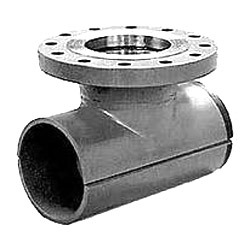Split tee fittings are a vital part of piping systems, enabling modifications and connections to be made efficiently without extensive system interruptions. Whether it’s in industrial operations, municipal infrastructure, or specialized engineering applications, split tees offer a flexible and practical solution for pipeline modifications and expansions.
What Are Split Tee Fittings?
Split tee fittings are mechanical components designed to create branch connections in pipelines. They come in two halves that clamp around an existing pipe, providing a secure and reliable fit. These fittings allow the pipeline to be tapped or extended without halting the flow of fluids or gases, making them invaluable in industries where downtime is costly or impractical.
Key Features of Split Tee Fittings
- Two-Piece Design: The split design enables easy installation on existing pipelines.
- Leak-Proof Seal: Designed to ensure a secure and leak-free connection.
- Material Versatility: Available in various materials to suit different environments.
- Pressure Resistance: Engineered to withstand high-pressure systems.
Applications of Split Tee Fittings
Split tee fittings are used across multiple industries due to their versatility and efficiency:
- Oil and Gas: Commonly employed for hot tapping, allowing new connections without shutting down pipelines.
- Water Systems: Used in municipal water pipelines to create branches or integrate new components.
- Chemical Processing: Facilitates pipeline modifications while maintaining the containment of hazardous materials.
- Power Generation: Plays a role in connecting pipelines in power plants, ensuring seamless fluid or gas distribution.
Materials Used in Split Tee Fittings
Choosing the right material for split tee fittings is essential for optimal performance. Popular materials include:
- Carbon Steel: A durable and economical choice for many industrial applications.
- Stainless Steel: Offers superior corrosion resistance, ideal for chemical and water systems.
- Ductile Iron: Common in municipal systems due to its strength and cost-effectiveness.
- Specialized Alloys: Designed for high-temperature or high-pressure environments.
Types of Split Tee Fittings
Split tee fittings are available in various designs to meet specific needs:
- Standard Split Tees: General-purpose fittings for basic pipeline branching.
- Reinforced Split Tees: Used in high-pressure systems to provide extra support.
- Hot Tapping Tees: Specialized for live tapping operations, avoiding shutdowns.
- Custom Split Tees: Designed for unique applications or non-standard pipeline dimensions.
Advantages of Using Split Tee Fittings
- Minimized Downtime: Pipeline modifications can be made without halting operations.
- Cost Savings: Eliminates the need for system shutdowns, saving time and resources.
- Flexibility: Accommodates a wide range of applications and environmental conditions.
- Durability: Built to withstand demanding operational environments.
Installation Process
Installing a split tee fitting requires careful planning and precision. Here’s a general overview of the process:
- Preparation: Assess the pipeline and mark the area for installation.
- Positioning: Align the split tee halves around the pipe.
- Securing: Use bolts or welding to fasten the fitting securely.
- Sealing: Apply sealing materials to ensure a tight connection.
- Testing: Perform pressure tests to verify the integrity of the installation.
Maintenance Tips
To ensure long-term performance and safety, regular maintenance of split tee fittings is essential:
- Inspect fittings periodically for signs of wear or corrosion.
- Tighten bolts and check seals to prevent leaks.
- Clean the fittings and surrounding areas to reduce the risk of contamination.
- Replace damaged or worn components promptly.
Challenges and How to Overcome Them
While split tee fittings are highly effective, some challenges may arise:
- Material Compatibility: Ensure the fitting material matches the pipeline material to avoid galvanic corrosion.
- Precision Requirements: Skilled professionals should handle installation to maintain alignment and sealing.
- Environmental Factors: Use appropriate coatings or materials to counteract harsh environmental conditions.
Conclusion
Split tee fittings are a cornerstone of modern pipeline systems, providing unmatched flexibility and efficiency in creating branch connections or modifying existing systems. Their ability to minimize downtime while maintaining system integrity makes them an indispensable tool across industries. By understanding their applications, benefits, and installation requirements, businesses can maximize the advantages of using split tee fittings and ensure smooth operations.





Comments